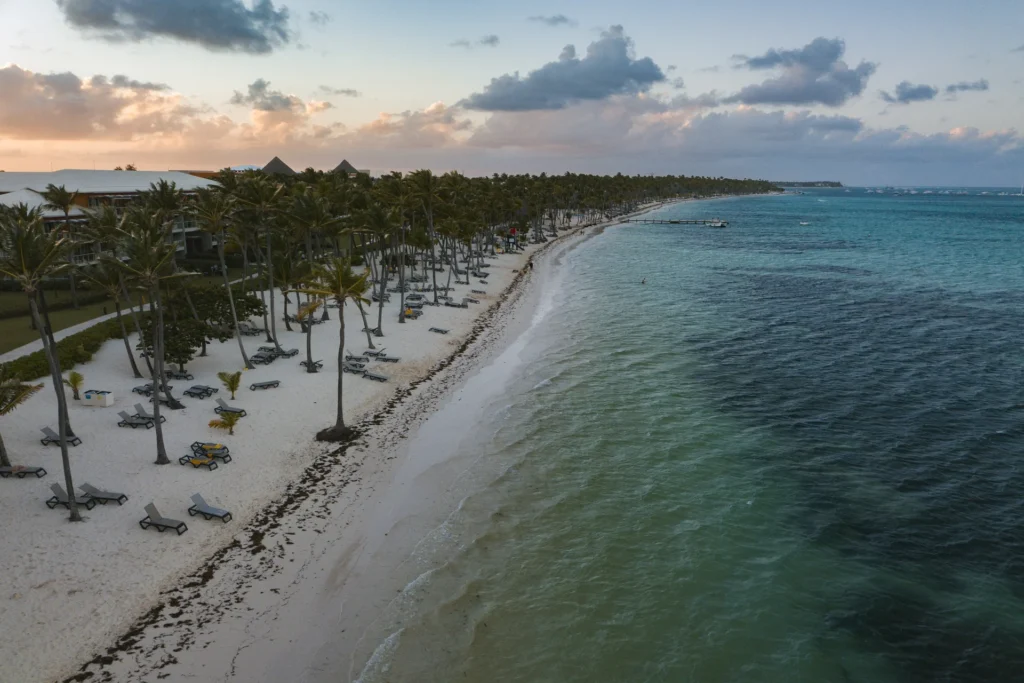Punta Cana, La Altagracia Province—Punta Cana’s shoreline is looking like its postcard self again. After months of battling the brown seaweed that has plagued the Caribbean, multiple beaches are now largely clear of sargassum. Recent social media posts—including a widely viewed reel—and on-site checks by Bávaro Digital staff across several beaches confirm that the coast has regained its usual turquoise-and-white-sand appeal.
Hotel teams are optimistic. Many say local beaches could remain clean at least through January, boosting the destination’s allure for fall and winter travelers.
While it’s premature to declare total victory, the latest outlook is encouraging—proof that coordinated local efforts and seasonal changes can produce visible results.
Did the Sargassum Really Leave?
- Beachgoers and residents report that “yes, the sargassum is gone” in multiple coastal zones right now.
- Travel forums note the high season for sargassum accumulation—typically May to September—is tapering off.
- Still, the phenomenon is erratic. In some years, sargassum arrives off-season, driven by ocean currents and weather patterns.
- Authorities and tourism operators have stepped up responses: marine barriers, sustained beach cleaning, and mechanical removal.
Bottom line: many beaches are currently clear. That doesn’t guarantee uniform conditions across the entire coastline—or that sargassum won’t return.
Environmental and Health Risks Persist
When sargassum piles up and decomposes, it can release hydrogen sulfide, lower oxygen levels in nearshore waters, and stress coastal ecosystems while affecting air quality. The region has endured extreme seasons recently; in May 2025, a massive sargassum belt was estimated at 38 million metric tons. Given the local economy’s reliance on beach tourism, any resurgence carries real financial risk.
Ongoing Challenges for Punta Cana
- Unpredictability: Shifting currents, eddies, and climate variables make it hard to forecast where and when seaweed will land.
- High cleanup costs: Keeping extensive coastlines pristine demands continuous funding and manpower.
- Coordination: Effective response hinges on government, the tourism sector, communities, and scientists working in sync.
- Valorization at scale: Turning collected sargassum into usable products requires investment, infrastructure, and stable markets.
What Today’s Clean Beaches Mean
The current reprieve is not a stroke of luck. It reflects months of organized mitigation, local persistence, and a seasonal dip in algal influx. The task now is to maintain momentum—refining early warning systems, reinforcing cleanup logistics, and expanding nature-friendly solutions.
Conclusion
Punta Cana’s beaches are shining again—and that’s great news for residents, visitors, and the tourism industry. But this is a window of opportunity, not a finish line. Sargassum can return quickly. The real win will be keeping the coastline clean consistently, sustainably, and with sound environmental criteria.

